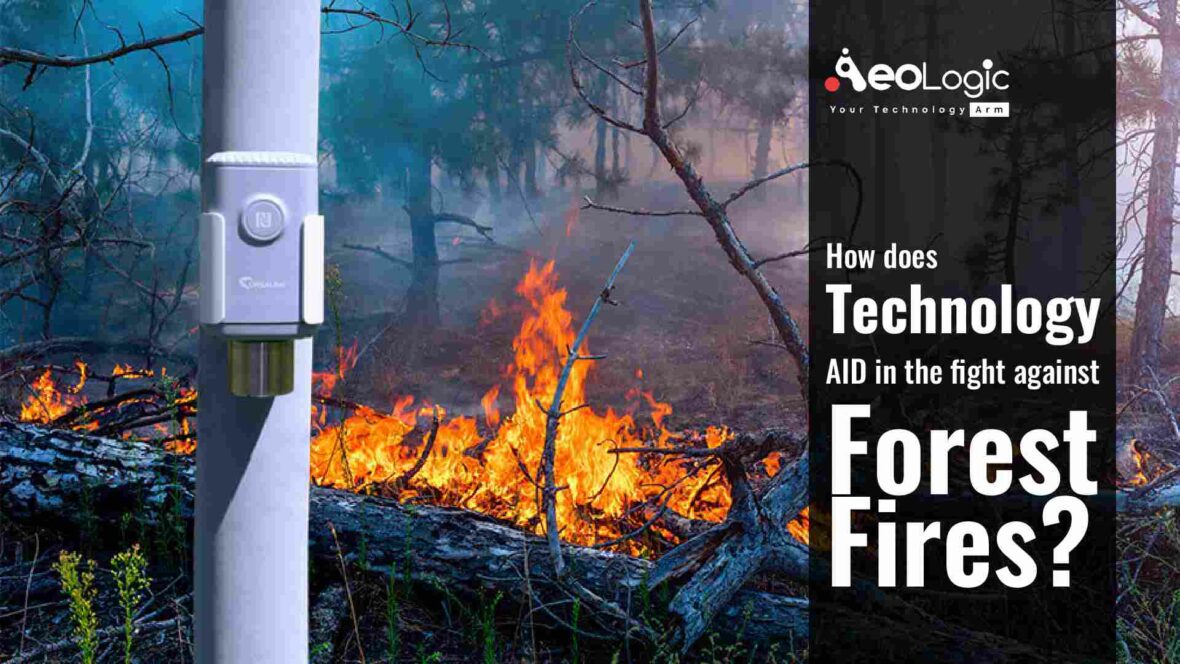- “A house you can rebuild; a bridge you can restring; a washed-out road you can fill in. But there is nothing you can do about a tree but mourn.” By Louise Dickinson Rich, We Took to the Woods
Forest fires in India are becoming more common as the temperature rises. Forest fires continue to endanger animal survival, animal habitats, local weather patterns, and natural flora and fauna.
To detect or manage forest fires, various wireless sensors, satellite systems, and neural network-based technologies are used around the world. For satellite-based hotspot observation, India relies primarily on the Aqua and Terra MODIS (Moderate Resolution Imaging Spectroradiometer) instruments and the Suomi National Polar-Orbiting Partnership-Visible Infrared Imaging Radiometer Suite (SNPP-VIIRS). Although MODIS data sets have been available for a long time, they have a resolution of 1x1Km, whereas SNPP-VIIRS datasets have been available from the year 2011 with a resolution of 375x375m, demonstrating the superiority of VIIRS over MODIS. Satellite-based detection of forest fires has been used since 2007.
Further Custom filters are used in the software for accurate detection, which has classes such as State, District, Circle, Division, Range, Block, Beat, Compartment Number, and so on. In addition, with the assistance of ground monitoring personnel (forest fire teams), cross-checking of the fire hotspots and reporting to the forest department of the relevant division can be done immediately.
Process Of Predicting Forest Fires Using Different Models
Nowadays, it has become comparatively easy to predict forest fires by comparing satellite data patterns and using various artificial intelligence (AI) modelling tools. Based on the information provided by these tools, Forest Department releases the advisory for upcoming forest fire incidences. The process followed is as below:
- Pre-processing of the data collected through principal component analysis (PCA) is used for the identification of the patterns of forest fire and selecting the fire region by using the Particle Swarm Optimization (PSO) technique.
- Based on the information received from the above methodology, different predictive technologies are used like Polynomial Neural Network (PNN), Cascade Correlation Network (CCN), Radial Basis Function (RBF), Multi-layered Perceptron Neural Network (MPNN), and Support Vector Machine (SVM).
- Following this process, there is a measurement of five consistency metrics including Root Mean Square Error (RMSE), the Mean Square Error (MSE), the Relative Absolute Error (RAE), the Mean Absolute Error(MAE), and the Information Gain (IG). Based on the values of these five metrics, prediction is evaluated.
For forest fire prediction, existing methods such as Convolutional Neural Network (CNN), Polynomial Neural Network (PNN), and SVM are being used. The disadvantage of the PNN and SVM methods is that they have lower efficiency in larger datasets due to bias toward classes with high instances, whereas the CNN method has the disadvantage of overfitting in training. Using IMD data, the current model takes more time to predict a forest fire.
In some places, satellite-based and meteorological data are combined to predict forest fires. The Parallel SVM model is currently in use. The advantage of using the Parallel SVM model is that it reduces the computational time and high storage required for the analysis. For predicting forest fires, Parallel SVM employs the Forecast Weather Index (FWI) as well as different weather parameters.
Conclusion
We can save forests by spraying a fire retardant or by other mechanisms at the predicted fire by using an AI modelling tool. Hot spots can be prepared for the upcoming forest fire season, saving biodiversity loss that would otherwise be irreversible, and thus aids in the fight against forest fires.
Hence using various tools in combination (Parallel SVM) can help in the much closer prediction of forest fire and such tools will help in future for early detection of the forest fire so that the alert can be issued before such disaster and further we can avoid the biodiversity loss cause of wildfires.
Also, read https://www.aeologic.com/blog/the-role-of-artificial-intelligence-in-wildlife-conservation/
This blog is written by Mr. Rachit Tiwari, Student TERI School of Advanced Studies (TSAS), New Delhi. Presently, he is doing his internship with Aeologic Technologies Pvt.Ltd.






